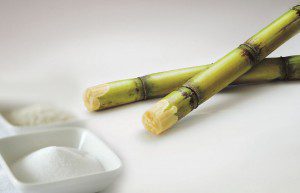| Online: | |
| Visits: | |
| Stories: |

| Story Views | |
| Now: | |
| Last Hour: | |
| Last 24 Hours: | |
| Total: | |
The REAL Truth Behind Sugar
21st March 2015
Contributing Writer for Wake Up World
Is Sugar Falsely Getting A Bad Rap?
Sugar, as most people think of sugar, is actually a very different product than sugar in the raw. Many people wouldn’t even recognize raw sugar if they came across it in the wild. It looks a lot like bamboo, and like bamboo, it is actually considered a type of grass – called sugarcane. Our palates love the sweet taste of sugar, and physiologically this makes sense since our primary source of energy comes from glucose. Without energy, there is no survival. Sugarcane has been used for thousands of years as a natural source of energy by many cultures.
Were all these early cultures just naïve as to the negative health effects of this giant sweet grass, and only now in modern times we have uncovered the dark secrets of this plant? Or is it possible that we are the ones who are naïve?
Sugar has been blamed for many health conditions, including obesity, diabetes, cardiovascular disease, and even cancer. It is no wonder that the Internet is overflowing with anti-sugar websites and articles! After all, “sugar is still sugar” no matter if it’s processed, raw and organic, or from a fruit or plant, including Stevia, the latest “healthy” sugar alternative!
But is there any validity to these negative claims? Well, before we slap sugar with a guilty verdict and banish it forever from our diet, I believe we should allow this sweet villain a proper defense.
There have been many studies showing the therapeutic effects of raw sugarcane juice. It has been shown to reverse jaundice and other liver-related disorders, and has been shown to help fight against viral, bacterial, and protozoan infections by regulating the effects of natural killer cells in the body. Sound unbelievable? In furthering the defense of sugar, note should be taken of the high levels of phenols and flavonoids in sugarcane juice, both of which are compounds generally accepted as effective cancer fighters. What may be shocking for some is that a recent study found the following:
“…levels of phenols and flavonoids in sugarcane juice are similar to or HIGHER than other fruits and vegetables including those found in garlic.” [1]
But wait—isn’t sugar supposed to cause cancer? Sorry sugar-haters, not all sugars are created equal, and it truly does depend on the type of sugar and the processing methods implemented.
The first major problem with “sugar” as we know it today, is that we are ingesting large amounts of it! One hundred years ago Americans were consuming less than 4 pounds of sugar per year, that is 384 teaspoons annually or around 1 teaspoon daily. Today the average person consumes an astronomical amount of nearly 22 teaspoons of sugar per day, that is 7,744 teaspoons or 80 pounds per year!
In fact from 1970 to 2000 alone, there was a 25% increase of “added sugars” in the U.S. food system.
But did this explosion of sugar consumption arise from a nationwide addiction to berries, melons, and sugarcane stalks? I am going to go out-on-a-limb and say absolutely not. Had that been the case, we’d be a much healthier society today! There is, however, another culprit – the addition of sugar to nearly everything!
Over the last 100 years, sugar has been added to nearly all of the processed foods consumed on a regular basis by a majority of individuals, and from a marketing standpoint, this is rather brilliant. When processed food came on the scene, developers sought out ingredients that could be added to the foods to make them more palatable, and there are 2 additives that can do just that: sugar and salt. Isn’t it interesting that many “health experts” readily condemn both sugar and salt yet both are needed for sustained life? So if both compounds are necessary to properly nourish our bodies, then the problem must lay in the amount we consume.
As processed food was introduced and marketed to the public, people began eating more and more quantities of food laced with sugar. Even unsuspecting foods such as canned vegetables and bread contain added sugar! Certainly the natural glucose and fructose content in vegetables are more than enough sugar, and the majority of traditional rustic breads use only 4 ingredients – yeast, flour, water, and salt. So what gives?
A 2003 study published by the Journal of Nutrition found that regular consumption of foods high in sugar is more likely the result of “habit and association”, which then can lead to chemical changes in the brain making people crave food high in sugar. [2]
So the more we consume products containing sugar, knowingly and unknowingly, the more we crave it.
But does this phenomenon apply to all things sugar, or only to sugar that has been extracted from its original source and processed? In other words, is this craving a result of added natural sugars, artificial sugars, or both?
Previous articles by Dr. Michelle Kmiec:
- The Truth About Insomnia, Depression and Anxiety
- Are There Natural Cures for ALS?
- Natural Cure for Depression Silenced?
- The Link Between Stress and Intestinal Parasites – and What to Do About Them
- Arthritis Cure Found in Nature
- The Sun & Skin Cancer: the Truths, Pseudo-Truths & Lies of Mainstream Science
- A Natural Cure for Migraines
- Natural Cure for Chronic Pain Syndromes Silenced by the Medical Establishment
- Fluoride Linked to Coronary Heart Disease
- How Clean Is Your Drinking Water?
-
[FACEBOOK]: http://www.facebook.com/joinwakeupworld (An interactive community of over 1,700,000)
[PINTEREST]: http://pinterest.com/wakeupword/
[TWITTER]: http://twitter.com/joinwakeupworld
[YOUTUBE]: http://www.youtube.com/joinwakeupworld
[GOOGLE PLUS]: https://plus.google.com/
[WEBSITE]: http://wakeup-world.com




